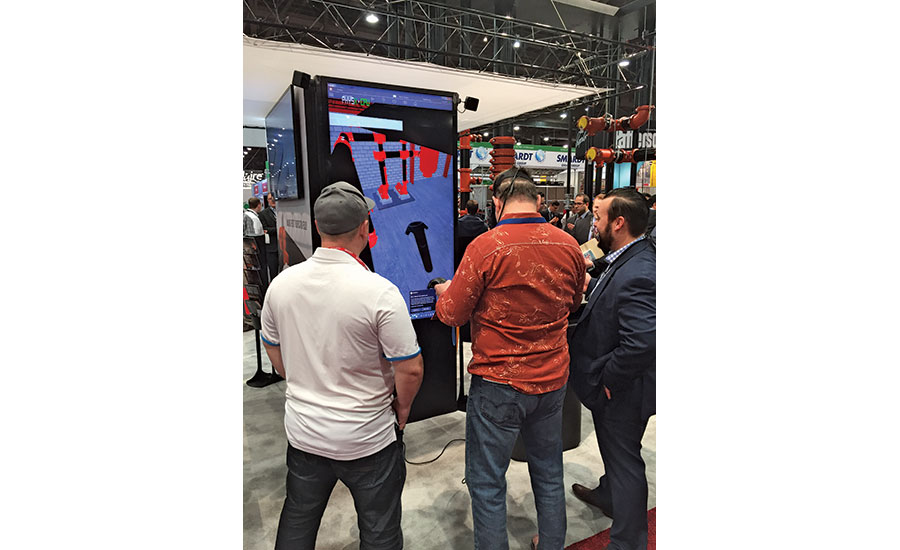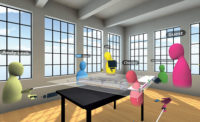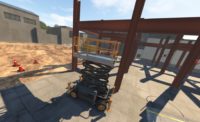While thinking up new workflows for designing mechanical systems, Amanda Comunale is making sure that her team members are spending enough time in virtual reality.
“With my group, we say if you’re not in the model everyday, it’s very hard to see what is going on,” says Comunale, who runs a tech development team as Victaulic’s director of construction piping services.
Victaulic, best known as a manufacturer of grooved, mechanical pipe-joining and fire-protection systems and solutions, may not seem like an obvious fit for virtual reality. But after seeing past investments in Revit and other BIM-related software pay off in the design of pipe connections and layouts, Comunale believes VR is the next logical step. Consumer-grade virtual-reality headsets, such as the HTC Vive and Oculus Touch, have lowered the price of VR adoption. Victaulic has bought in.
“The impact of letting customers see the piping [in VR] is great, but to move a project forward, you need to get them engaged with the model,” says Comunale. She cites a case in which a pump-room pipe had an unexpected transition, from flanged to grooved pipe, that was caught only in VR review. It also has allowed Victaulic engineers to consult on projects globally, reviewing complex clashes inside the model. “VR tech is here, and it works,” says Comunale. “We want it to be the standard project review.”
This spelling of the name Victaulic was corrected April 7.






Post a comment to this article
Report Abusive Comment